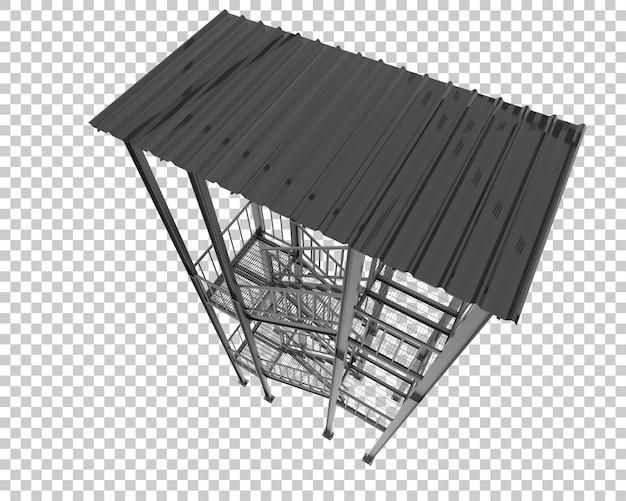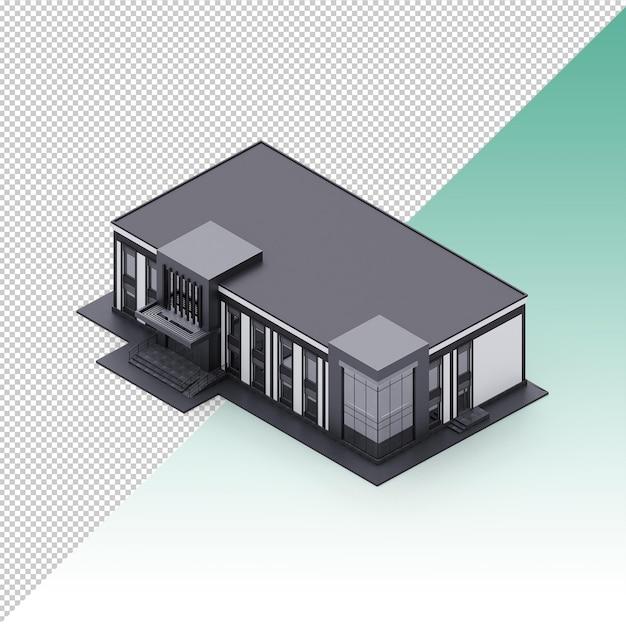Brick has been a popular building material for centuries, known for its durability and aesthetic appeal. But when it comes to fire safety, many people wonder: is brick considered non combustible? In this blog post, we will explore the fire-resistant properties of brick and delve into the question of whether brick houses can catch on fire.
We will also address related topics such as the difference between combustible and flammable materials, the fire resistance of brick walls, and alternative materials to fire bricks. So, if you’ve ever wondered about the fire safety of brick and other building materials, keep reading to find out more. Let’s dig into the facts and debunk the myths about brick’s combustibility!
Is Brick Really Non-Combustible
Brick, a timeless building material that has been used for centuries, is often hailed for its durability, strength, and aesthetic appeal. But when it comes to fire safety, the question arises: Is brick considered non-combustible? Let’s take a closer look at this fiery topic and separate fact from fiction.
The Burning Question: Is Brick Fireproof
You might be surprised to learn that brick is not technically fireproof. While it is highly resistant to fire, it does not have the ability to withstand fire indefinitely. Instead, brick is considered fire-resistant due to its composition and design. This means that it can withstand the heat of a fire for a longer period than many other building materials.
The Fiery Ingredients: What Makes Brick Fire-Resistant
Brick is made primarily of clay, which is then fired at high temperatures to create its solid form. This firing process gives brick its remarkable durability and heat resistance. Additionally, the compact structure of brick helps to prevent the spread of flames by providing a barrier that slows down the progress of the fire.
The Heat Test: How Does Brick Perform in Fires
When exposed to intense heat, brick can withstand temperatures of up to 1200 degrees Celsius (2192 degrees Fahrenheit) before it begins to crack or break down. This high thermal resistance makes brick an excellent choice for fireproofing buildings and reducing the risk of fire spread.
The Flame Fighter: Brick’s Role in Fire Safety
While brick is not completely fireproof, its fire-resistant properties make it an important component in fire safety measures. Buildings constructed with brick facades or brick walls add an extra layer of protection against the spread of fire. This can be crucial in preventing the rapid propagation of flames, giving occupants more time to evacuate safely and reducing property damage.
The Hot Debate: Brick vs. Other Building Materials
When comparing brick to other common building materials like wood or vinyl siding, the difference in fire resistance becomes evident. Wood, for example, is highly combustible and can quickly contribute to the spread of a fire. Vinyl siding, although not as flammable as wood, can melt and release toxic fumes when exposed to high temperatures.
Conclusion: Brick, the Fire-Resistant Hero
While brick may not be entirely non-combustible, its fire-resistant qualities make it a reliable choice for enhancing fire safety in buildings. By slowing down the progression of fires and providing a protective barrier, brick can save lives and protect properties. So, the next time you admire a brick building, remember its unsung role in keeping us safe from the flames.
Remember, when it comes to fire safety, it’s essential to rely on tested and approved building materials and follow local building codes and regulations. So, embrace the timeless beauty and fire-resistant qualities of brick, as it safeguards us against one of nature’s most destructive forces.
Disclaimer: Don’t challenge brick to an actual fire-fighting contest; you might be disappointed with its lack of superpowers. Leave that job to the firefighters!
FAQ: Is Brick Considered Non-Combustible
Welcome to our FAQ section on the topic of fire resistance and the combustibility of brick. Here, we’ll answer some burning questions (pun intended) about non-combustible materials, brick fire resistance, and much more. So, let’s get started!
Is Steel a Non-Combustible Material
Steel is indeed considered a non-combustible material. It has a high melting point, making it resistant to fire. So, if you’re looking for a fire-resistant material, steel is an excellent choice.
Why is Brick Fire-Resistant
Brick is fire-resistant due to its composition and construction. Made from clay and fired at high temperatures, bricks are able to withstand extreme heat without catching fire. As a result, brick structures offer excellent protection against spreading fires.
Which Gas is Non-Combustible
When it comes to gases, nitrogen is a prime example of a non-combustible gas. Nitrogen is widely used in various industries to displace oxygen, preventing combustion. So, feel free to breathe easy when it comes to nitrogen!
Is Glass a Non-Combustible Material
Contrary to popular belief, glass is not considered a non-combustible material. While it won’t ignite like flammable substances, it can still melt or crack under intense heat. So, it’s best to exercise caution when using glass near open flames or high temperatures.
Is Cloth Combustible or Non-Combustible
Cloth is generally considered to be combustible. Fabrics made from natural fibers, such as cotton or wool, have the potential to catch fire and burn. However, synthetic fibers like polyester or nylon are more resistant to ignition. Always be aware of fire risks when dealing with cloth materials.
What Does Non-Combustible Mean
Non-combustible refers to materials that are resistant to catching fire, burning, or supporting combustion. These materials, such as steel or brick, can withstand high temperatures without igniting. Choosing non-combustible materials is crucial in fire safety and prevention.
Can Brick Houses Catch on Fire
While brick houses are highly fire-resistant, it’s important to remember that no structure is entirely fireproof. In extreme conditions, such as intense wildfires, even brick houses can be vulnerable. However, brick houses offer significantly better fire protection compared to houses made from combustible materials.
Is Brick Considered Combustible
No, brick is not considered combustible. Thanks to its composition and firing process, brick is highly resistant to fire. So, you can trust that brick walls and structures will provide a sturdy defense against flames.
What is Considered a Non-Combustible Wall
A non-combustible wall refers to a wall constructed using materials that do not easily catch fire or contribute to the spread of flames. Common examples of non-combustible wall materials include brick, concrete, steel, or gypsum.
Is Cement Board Considered Non-Combustible
Yes, cement board is considered a non-combustible building material. Made from a mixture of cement, sand, and fibers, cement board offers excellent fire resistance and is often used in construction for its safety properties.
How Thick is a 2-Hour Fire Rated Wall
A 2-hour fire-rated wall is typically constructed using multiple layers of fire-resistant materials. The thickness of such a wall can vary depending on the specific materials used. For example, it may consist of two layers of 5/8-inch thick gypsum board with a layer of fire-resistant insulation in between.
Is Oxygen a Non-Combustible Gas
No, oxygen is not a non-combustible gas. In fact, oxygen supports combustion and is essential for fires to burn. While oxygen is necessary for human survival, it’s important to handle it with care to avoid promoting flames or explosions.
Is Paper a Combustible Material
Yes, paper is highly combustible. Being made from cellulose fibers, it can easily catch fire and burn rapidly. That’s why it’s crucial to keep paper away from open flames or heat sources to prevent fire hazards.
What Materials are Non-Combustible
Several materials fall under the category of non-combustible. These include steel, brick, concrete, glass, and certain types of insulation. These materials offer excellent fire resistance and are widely used in construction to enhance safety.
What is the Difference Between Combustible and Flammable
The terms combustible and flammable both describe materials that can catch fire. However, the main distinction lies in their ignition points. Flammable materials have lower ignition points, making them more prone to catching fire. Combustible materials, on the other hand, have higher ignition points but can still burn under the right conditions.
Is a Brick Wall Fire-Rated
While brick walls provide excellent fire resistance, they may not always be officially classified as fire-rated. Fire-rated walls are specially designed and tested to meet specific fire-resistant standards. However, brick walls are still highly effective in providing fire protection and slowing down the spread of flames.
Are Bricks Resistant to Fire
Absolutely! Bricks are highly resistant to fire. Their composition and firing process allow them to withstand extreme temperatures without igniting. This makes bricks an ideal choice for fireproofing buildings and creating fire barriers.
At What Temperature Will Drywall Ignite
Drywall, commonly used in construction, is unfortunately not fire-resistant. It can start to ignite at around 451 degrees Fahrenheit (233 degrees Celsius). That’s why it’s crucial to incorporate fire-resistant materials, such as gypsum board or insulation, to improve the fire safety of buildings.
What is the Least Flammable Element
The least flammable element is arguably helium. Helium is an inert gas, meaning it does not easily react with other substances, including oxygen. Due to its non-flammable properties, helium is used in various applications ranging from balloon inflation to aerospace industries.
Is Stone a Non-Combustible Substance
Yes, stone is generally considered a non-combustible substance. Its high density and low porosity make it highly resistant to fire. Certain types of stone, such as granite or basalt, can withstand extreme heat without catching fire, making them an excellent choice for fire-resistant construction.
What is the Fire Resistance of a Brick Wall
The fire resistance of a brick wall depends on its thickness and construction. A standard 4-inch (10 cm) thick brick wall offers about 1 hour of fire resistance. However, thicker walls, additional insulation, or specialized brick arrangements can provide even higher levels of fire resistance.
Is Class 2.2 a Flammable Gas
Class 2.2 actually refers to non-flammable, non-toxic gases. So, you can rest assured that Class 2.2 gases are not flammable and do not pose a fire hazard.
Is Drywall Considered Non-Combustible
No, drywall is not considered non-combustible. While it contains gypsum, which offers some fire resistance, standard drywall can still ignite and burn. However, specialized types of drywall, such as Type X, incorporate additional fire-resistant materials to improve its fire performance.
What is the Most Combustible Liquid
Gasoline is often regarded as one of the most combustible liquids. With a low flash point, gasoline can easily vaporize and ignite, making it highly flammable and dangerous. It’s important to handle and store gasoline with extreme caution to prevent fire hazards.
Is Red Brick Fire-Resistant
Yes, red brick is fire-resistant. The color of the brick does not affect its fire resistance properties. Whether red or any other color, bricks provide excellent protection against fire due to their composition and construction.
What Can You Use Instead of Fire Bricks
If fire bricks are not readily available, you can use alternative fire-resistant materials such as refractory concrete, ceramic fiber, or vermiculite board. These materials offer similar heat resistance and can be used for various applications, including fireplaces or kilns.
Is Kerosene Oil Combustible or Non-Combustible
Kerosene oil is combustible. Often used as a fuel for lamps, heaters, or stoves, kerosene can easily catch fire and burn. It’s important to handle and store kerosene with caution to avoid fire accidents.
That concludes our comprehensive FAQ section on the topic of brick and non-combustibility. We hope you found the answers enlightening! Remember, it’s always important to prioritize fire safety by using fire-resistant materials and following proper precautions. Stay safe and fire-free!

